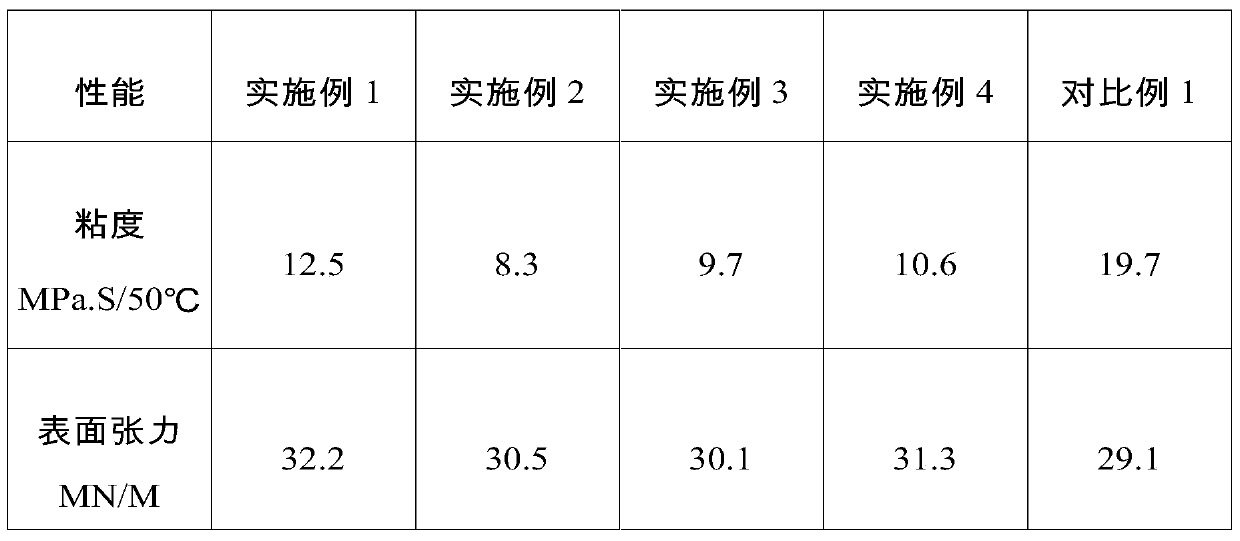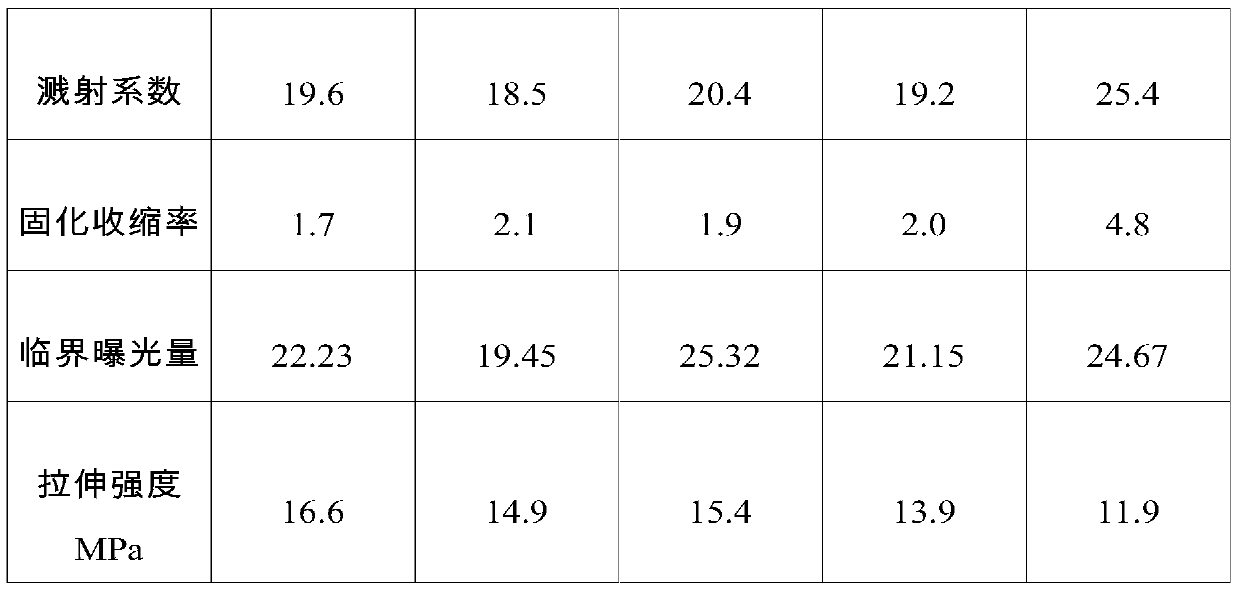A kind of photocuring material and its preparation method and application
A technology of light-curing materials and printing materials, which is applied in the chemical industry, can solve the problems of relying on foreign imports of molding resins, few materials suitable for light-curing, and high prices of molding materials, and achieve moderate curing strength and flexibility, small curing shrinkage, and high hardness. and moderate flexibility
- Summary
- Abstract
- Description
- Claims
- Application Information
AI Technical Summary
Problems solved by technology
Method used
Image
Examples
Embodiment 1
[0044] 1. Preparation of photocurable materials
[0045]Main resin:
[0046] Polyethylene glycol diacrylate (PEGDA): 30%;
[0047] Dicyclohexylmethane diisocyanate belongs to cycloaliphatic diisocyanate: 40%;
[0048] Photoinitiator:
[0049] BP: 1%;
[0050] TPO: 1.5%
[0051] Active diluent
[0052] Tripropylene glycol diacrylate: 8%
[0053] Pure acrylic resin: 6.5%
[0054] Auxiliary:
[0055] Ethanol: 5%;
[0056] Dimethicone: 4%
[0057] Polyacrylate: 4%;
[0058] Add the above raw materials into the reactor, stir to dissolve, and then vigorously stir at 40°C for 6 hours. After the stirring is completed, let it stand for cooling and filter to obtain a photocurable material, that is, a photocurable resin binder.
[0059] 2. Preparation of zirconia printing materials
[0060] Add 92% by weight of zirconia powder and 8% of the light-curable material prepared in step 1 into the mixer.
[0061] Turn on the mixer, mix and grind the above two raw materials at a spe...
Embodiment 2
[0064] 1. Preparation of photocurable materials
[0065] Main resin:
[0066] Polyethylene glycol diacrylate (PEGDA): 25%;
[0067] Dicyclohexylmethane diisocyanate belongs to cycloaliphatic diisocyanate: 30%;
[0068] Photoinitiator:
[0069] BP: 2%;
[0070] TPO: 3%
[0071] Active diluent
[0072] Tripropylene glycol diacrylate: 10%
[0073] Pure acrylic resin: 10%
[0074] Auxiliary:
[0075] Ethanol: 8%;
[0076] Dimethicone: 6%
[0077] Polyacrylate: 6%;
[0078] Add the above raw materials into the reactor, stir to dissolve, and then vigorously stir at 40°C for 6 hours. After the stirring is completed, let it stand for cooling and filter to obtain a photocurable material, that is, a photocurable resin binder.
[0079] 2. Preparation of zirconia printing materials
[0080] Add 90% by weight of zirconia powder and 10% of the photocurable material prepared in step 1 into the mixer.
[0081] Turn on the mixer, mix and grind the above two raw materials at a spee...
Embodiment 3
[0084] 1. Preparation of photocurable materials
[0085] Main resin:
[0086] Polyethylene glycol diacrylate (PEGDA): 35%;
[0087] Dicyclohexylmethane diisocyanate is an alicyclic diisocyanate: 45%;
[0088] Photoinitiator:
[0089] BP: 0.5%;
[0090] TPO: 0.5%
[0091] Active diluent
[0092] Tripropylene glycol diacrylate: 5%
[0093] Pure acrylic resin: 5%
[0094] Auxiliary:
[0095] Ethanol: 4%;
[0096] Dimethicone: 2%
[0097] Polyacrylate: 3%;
[0098] Add the above raw materials into the reactor, stir to dissolve, and then vigorously stir at 40°C for 6 hours. After the stirring is completed, let it stand for cooling and filter to obtain a photocurable material, that is, a photocurable resin binder.
[0099] 2. Preparation of zirconia printing materials
[0100] Add 95% by weight of zirconia powder and 5% of the photocurable material prepared in step 1 into the mixer.
[0101] Turn on the mixer, mix and grind the above two raw materials at a speed of 200 ...
PUM
| Property | Measurement | Unit |
|---|---|---|
| particle diameter | aaaaa | aaaaa |
Abstract
Description
Claims
Application Information
 Login to View More
Login to View More - R&D
- Intellectual Property
- Life Sciences
- Materials
- Tech Scout
- Unparalleled Data Quality
- Higher Quality Content
- 60% Fewer Hallucinations
Browse by: Latest US Patents, China's latest patents, Technical Efficacy Thesaurus, Application Domain, Technology Topic, Popular Technical Reports.
© 2025 PatSnap. All rights reserved.Legal|Privacy policy|Modern Slavery Act Transparency Statement|Sitemap|About US| Contact US: help@patsnap.com


